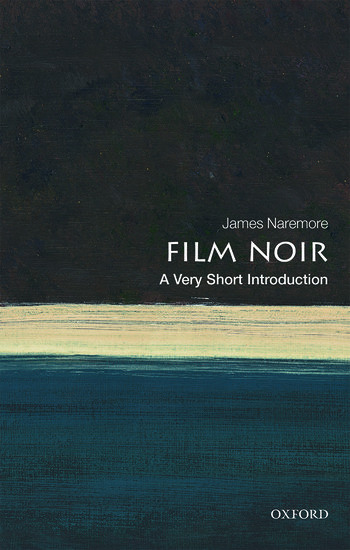Home >
A Very Short Introduction >
Film Noir (Art)
A Very Short Introduction | Art
Film Noir
ISBN: 9780198791744
Series: A Very Short Introduction
Film Noir (Art)
A Very Short Introduction Film Noir (Art) Media > Books > Non-Fiction > Education Books Expect Delays of Up to 4 Weeks| Order Below |
ISBN
9780198791744 (10-digit ISBN: 0198791747)
- Description
- Key Features
- Series Description
- Table of Contents
- Considers the fascinating genre of film noir, discussing what makes a film "noirified," and why these films are so difficult to categorize
- Highlights the key themes, films, and styles of film noir
- Discusses some of the most iconic film noirs, among them The Maltese Falcon, Double Indemnity, The Third Man, Chinatown, Devil in a Blue Dress, and Lost Highway
Film noir, one of the most intriguing yet difficult to define terms in cinema history, is usually associated with a series of darkly seductive Hollywood thrillers from the 1940s and 50s--shadowy, black-and-white pictures about private eyes, femme fatales, outlaw lovers, criminal heists, corrupt police, and doomed or endangered outsiders. But, film noir actually predates the 1940s and has never been confined to Hollywood. International in scope, its various manifestations have spread across generic categories, attracted the interest of the world's great directors, and continue to appear even today.
In this Very Short Introduction James Naremore shows how the term film noir originated in in French literary and film criticism, and how later uses of the term travelled abroad, changing its implications. In the process, he comments on classic examples of the films and explores important aspects of their history: their critical reception, their major literary sources, their methods of dealing with censorship and budgets, their social and cultural politics, their variety of styles, and their future in a world of digital media and video streaming.
Oxford's Very Short Introductions series offers concise and original introductions to a wide range of subjects--from Islam to Sociology, Politics to Classics, Literary Theory to History, and Archaeology to the Bible.
Not simply a textbook of definitions, each volume in this series provides trenchant and provocative--yet always balanced and complete--discussions of the central issues in a given discipline or field. Every Very Short Introduction gives a readable evolution of the subject in question, demonstrating how the subject has developed and how it has influenced society. Eventually, the series will encompass every major academic discipline, offering all students an accessible and abundant reference library.
Whatever the area of study that one deems important or appealing, whatever the topic that fascinates the general reader, the Very Short Introductions series has a handy and affordable guide that will likely prove indispensable.
Please note: As this series is not ELT material, these titles are not subject to discount.
Preface
1. The idea of film noir
2. The modernist crime novel and Hollywood noir
3. Censorship and politics in Hollywood noir
4. Budgets and critical discrimination
5. Styles of film noir
6. The afterlife of noir and the changing mediascape
Further reading
Index
Film noir, one of the most intriguing yet difficult to define terms in cinema history, is usually associated with a series of darkly seductive Hollywood thrillers from the 1940s and 50s--shadowy, black-and-white pictures about private eyes, femme fatales, outlaw lovers, criminal heists, corrupt police, and doomed or endangered outsiders. But, film noir actually predates the 1940s and has never been confined to Hollywood. International in scope, its various manifestations have spread across generic categories, attracted the interest of the world's great directors, and continue to appear even today.
In this Very Short Introduction James Naremore shows how the term film noir originated in in French literary and film criticism, and how later uses of the term travelled abroad, changing its implications. In the process, he comments on classic examples of the films and explores important aspects of their history: their critical reception, their major literary sources, their methods of dealing with censorship and budgets, their social and cultural politics, their variety of styles, and their future in a world of digital media and video streaming.
Key Features
- Considers the fascinating genre of film noir, discussing what makes a film "noirified," and why these films are so difficult to categorize
- Highlights the key themes, films, and styles of film noir
- Discusses some of the most iconic film noirs, among them The Maltese Falcon, Double Indemnity, The Third Man, Chinatown, Devil in a Blue Dress, and Lost Highway
Series Description
Oxford's Very Short Introductions series offers concise and original introductions to a wide range of subjects--from Islam to Sociology, Politics to Classics, Literary Theory to History, and Archaeology to the Bible.
Not simply a textbook of definitions, each volume in this series provides trenchant and provocative--yet always balanced and complete--discussions of the central issues in a given discipline or field. Every Very Short Introduction gives a readable evolution of the subject in question, demonstrating how the subject has developed and how it has influenced society. Eventually, the series will encompass every major academic discipline, offering all students an accessible and abundant reference library.
Whatever the area of study that one deems important or appealing, whatever the topic that fascinates the general reader, the Very Short Introductions series has a handy and affordable guide that will likely prove indispensable.
Please note: As this series is not ELT material, these titles are not subject to discount.
EASY ORDER FORM
PRICES LISTED INCLUDE CONSUMPTION TAX
Price Before Tax:
¥1,790


